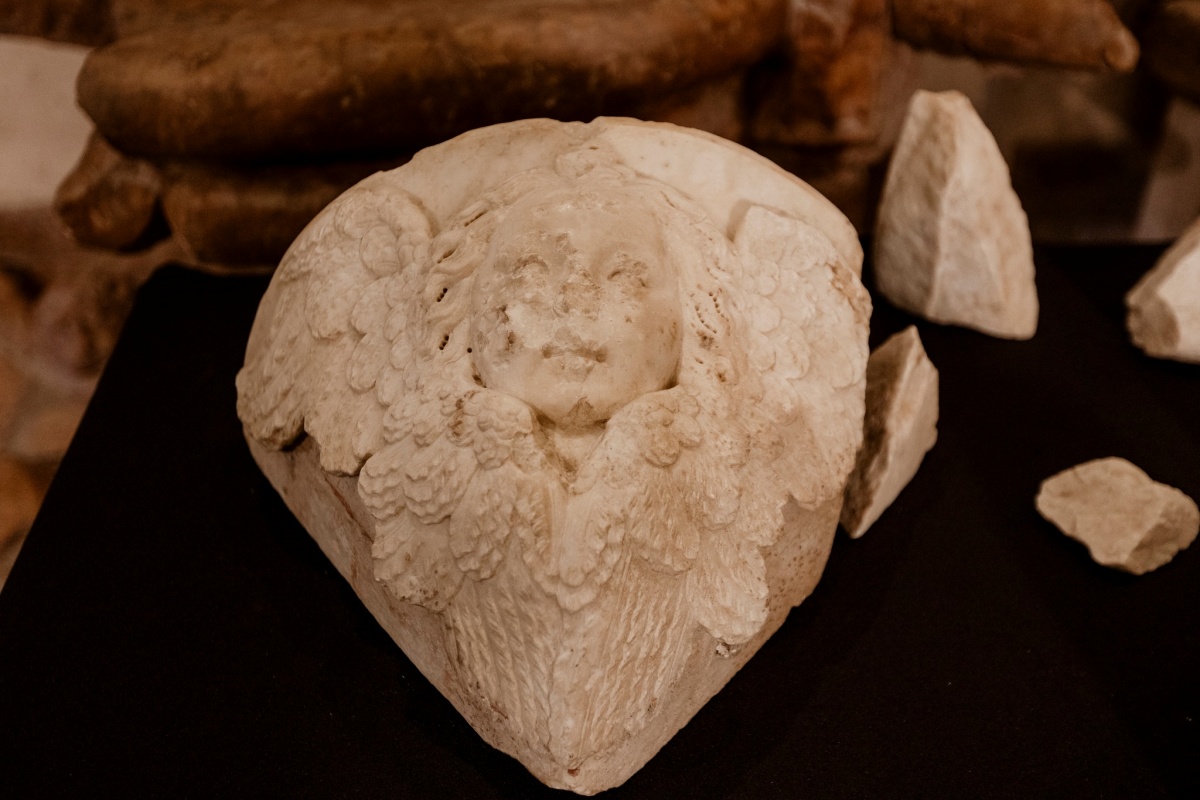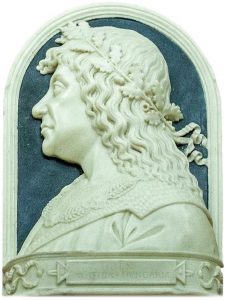
Lectures revisited the early relationship between art history of French origin and the Kingdom of Hungary,Continue reading

A unique Renaissance altarpiece has been discovered at Visegrád Castle (Central-Hungary). In an interview with Mandiner, archaeologist and art historian Gergely Buzás said that the find confirms that Hungary was a European center of art and culture in the time of King Matthias Corvinus.
The Visegrád castle and royal palace, significant medieval monuments in Hungary, are undergoing a comprehensive excavation and restoration under the Visegrád Renaissance Development Program, which aims to recreate the castle system and Royal Palace to their Matthias-era (1458-1490) state. Launched in 2021, the project involves extensive archaeological excavations to discover unexplored parts of the medieval complex.

The Visegrád Castle. Photo via Facebook/Visegrád Reneszánsza
The recent excavation has uncovered a remarkable find: the remains of a Renaissance altar carved in white marble by Benedetto da Maiano, a prominent Florentine sculptor from the 15th century.
“During the excavation of the church of the Franciscan monastery next to the Royal Palace, one of the sites of the trial excavations, I managed to uncover a very special collection of finds: the remains of a Renaissance altar carved in white marble, by Benedetto da Maiano,” Mr. Buzás said.
This discovery was confirmed by Professor Francesco Caglioti from the University of Pisa, who recognized the characteristic features of da Maiano’s work in the carvings. “The excavated carvings, in particular the almost intact cherubic heads, show many of the characteristics of the feathers, hair, and facial features, as well as the drapery of the fragmentary angel statues, which are exact copies of those found on Benedetto da Maiano’s mature works.”
The excavation has also revealed a tragic historical event. The remains of three young individuals, likely monks, were found in a crypt amidst broken statues and other debris, suggesting they were victims of armed combat during the 1540 siege by King Ferdinand’s (1556-1564) army. This tragic event was followed by the monastery’s abandonment and the subsequent concealment of the remains by the collapsing sanctuary vault.
The story of the destruction of the statues is no less fascinating, though undoubtedly tragic,” added the archaeologist.
The unearthed artifact is of great significance as it confirms King Matthias’s vision of Hungary as a cultural and artistic hub in 15th-century Europe, where he commissioned works from leading Italian artists. “The chances of finding Renaissance works of art of similar quality and in good condition, but hitherto unknown, are now very slim,” Gergely Buzás concluded. The ongoing excavations hold promise for further significant discoveries, shedding light on Hungary’s rich medieval history.

Benedetto da Maiano’s marble relief of King Matthias from the “double portrait”. Picture: Wikipedia
Via Mandiner; Featured Image: Facebook / Visegrád Reneszánsza